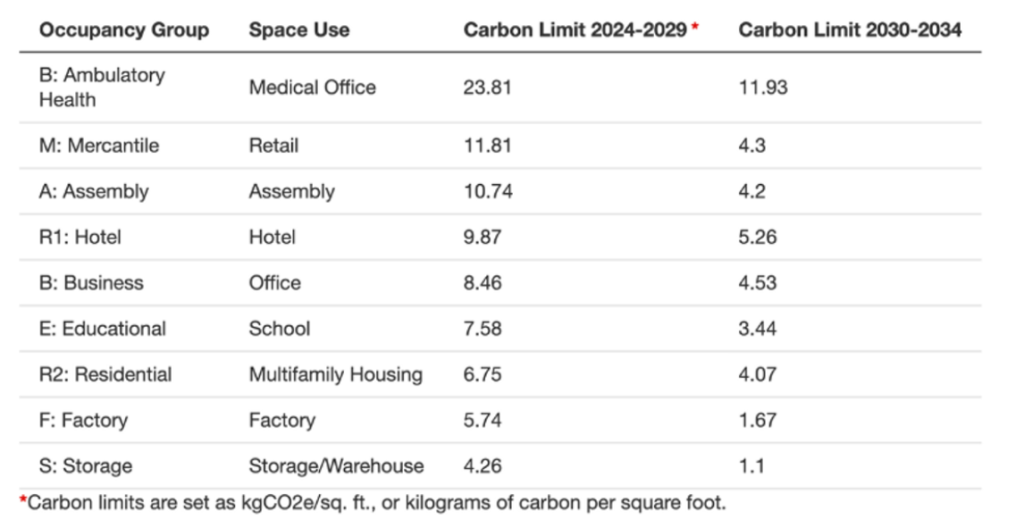


Local Law 97 is designed to enforce energy efficiency in some 57,000 buildings in New York City. It imposes steep fines on buildings that do not comply and could also lead to misdemeanors.
Below is some information on Local Law 97 that was summarized from the Urban Green Council’s FAQ page
The Climate Mobilization Act is the name of a package of laws passed by the New York City Council on April 18, 2019. Local Law 97 (the building emissions law) is the centerpiece of the package and by far the most impactful. The package includes other important laws related to reducing greenhouse gas emissions. You can read more about the Climate Mobilization Act on the New York City Council Press Release
In general, if a property is subject to Local Law 87, the Benchmarking Law, it is subject to the building emissions law. The city issues an annual Covered Buildings List here.
Local Law 97 sets emissions intensity limits (metric tons of CO2e per square foot) for 10 building categories.
There are several exceptions and set asides however. For example, buildings with rent-regulated units, may not be subject to emissions limits. Mixed-use buildings will have customized limits that reflect their unique blend of occupancy groups.
Below are the 2024 and 2030 carbon emissions limits for the most common groups, specifically multifamily apartments, offices and hotels. The law provides limits in metric tons of carbon dioxide equivalent. Note that one metric ton (mt) equals 1000 kilograms (kg) Readers can better understand kg of carbon dioxide rather than “metric tons”. The following table express these numbers in kilograms of carbon dioxide for ease of comprehension.

To see your building’s annual emissions intensity, find your building by using this website borough-block-lot (BBL) number or type in your street address at Metered.nyc. Scroll down to “GHG Emissions / sq.ft.”. Multiply that emissions intensity by a building’s total area (in square feet) to determine annual carbon emissions for the applicable year.
Check out this example below.


There are many no/low cost energy efficiency measures that landlords can implement to help reduce carbon emissions. We list a few of these measures below
We have been very successful using our GreenConnect Real Time Energy Manager platform to help identify no/low cost measures.
Most notably we find that a good amount of carbon emissions comes from the commercial tenant spaces. In many instances, commercial landlords do not impose on their tenants energy efficiency practices. Many landlords sub-meter tenants to recover energy costs. It would be interesting to see if landlords will be using sub-metering data to mete out the annual fines. Landlords will in effect penalize inefficient tenants and reward efficient ones.
According to the USGBC’s website, here are options that building owners have in addition to implementing energy efficiency measures.
Local Law 97 provides some flexibility for buildings to comply with any of the following:
A new department within the NYC Department of Buildings will also have the authority to grant exceptions, for reasons such as financial hardship and practical constraints (like lack of access to building systems due to existing leases).
Ultimately, failure to comply will result in fines however.

The law creates fines for two types of violations, with a third type also considered a misdemeanor:
For example, a 1,587,872 square-foot commercial office building emitting 14,550 metric tons of carbon would be 1,016 metric tons over its 2024-2029 limit and pay a fine of approximately $272,351.
Fines are assessed on an annual basis.